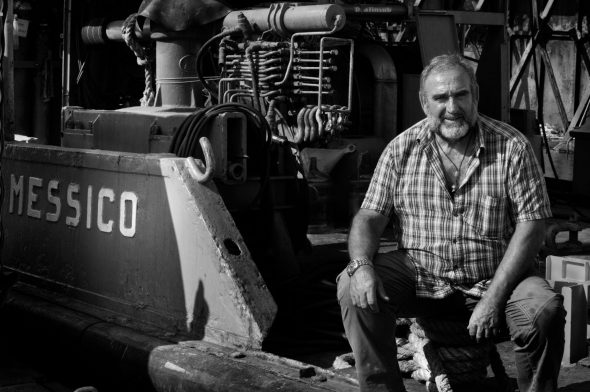Boating in a Portrait | Adriano Passeri: “My encounter with diving was at a young age and quite by chance. At 14 I tried an oxygen breathing apparatus and was fascinated”
Adriano “Dino” Passeri is a piece of professional diving history in Italy. He is the founder of Drafinsub, a leading Genoese company in diving works

Boating in a Portrait | Adriano Passeri: “My encounter with diving was at a young age and quite by chance. At 14 I tried an oxygen breathing apparatus and was fascinated”
Adriano “Dino” Passeri is a piece of professional diving history in Italy. He is the founder of Drafinsub, a leading Genoese company in diving works
Adriano “Dino” Passeri wrote part of the professional diving history in the Italian industry. In 1976, from his passion for the sea and diving came Drafinsub, a leading company in Genoa in the underwater works sector, with the skills to take on any projects with air in shallow waters or in saturation in deep waters.
The latest of the large works by the company took place after the storm on 29 October, to remove the wreckage from the ports of Rapallo and Santa Margherita Ligure. The name Drafinsub (deriving from “drafin” dolphin in Genoese, Dino Passeri’s favourite animal) is also connected to a number of events, both positive and negative, which happened in the seas and lakes: from the recovery of the Cristo degli Abissi in San Fruttuoso to the Costa Concordia.
Drafinsub’s history crosses two generations, the founding generation with among the founding partners Adriano Passeri, and the current one, a story of constant growth which under the current management of Gianluca Passeri is translating into growth in step with technology and safety.
Dino Passeri, how did you first come into contact with diving? Why did you decide to go diving for the first time?
My encounter with divingwas at a young age and quite by chance. As a boy I went to boy scouts, they took us to visit some caves, and among my friends were the grandsons of Cressi who brought along a breathing apparatus. We were just under 14 years old…we all tried it, but I was more fascinated than the rest.
When did you understand that diving could become a profession?
Not much time after, someone gifted a boat, they were no longer using to the boy scouts, but nobody took care of it. They docked it on the pier at Duca degli Abruzzi and in my free time I went to clean it.
Near it was a surface-supplied diver who asked me one day to take a look at the propellers of a yacht. I still remember the name: “Together III”. Since I was already in the water, I helped him and so began my passion.
At 18 I was working as a docker in the port of Genova and, by going there I saw the divers at work. Some private companies were already around then, and I understood that my passion could become a job, my job.
You and your company have trained a number of highly specialised professionals. Is there something you repeat to your staff before they go under?
Certainly there is something I always repeat to my staff before they dive, I repeat ad nauseum everything they have to do, from explaining the job to safety criteria. Because under water it is easy to forget even what you already know.
Your dives are certainly not standard and always have a hint of danger. What is the job you remember most and why?
I remember a lot of diving jobs, the most particular was an easy job, but carried out in a difficult location, the Caorso nuclear centre (1986-87). We had to clean a cooling tank, a simple job, the danger of contamination didn’t stop our enthusiasm and our desire to complete the task.
The level of safety and quality of the work which our company does now, the technology, the technique acquired, we unimaginable at the time. Nowadays we work with immersion systems, using the saturation diving technique to depths reaching 300 metres.
We have recently successfully completed the restoration of the conduits in Lake Garda, at a depth of -186 metres at the bottom of the lake. Using the “diver-less”, technique, instead, we can work at even -800 metres, to identify and move bombs going back to the wars, and which sometimes block the laying of the TAP pipeline between Albania and Puglia.
Giuseppe Orrù
Photos by Claudio Colombo
BOATING IN A PORTRAIT A project by Liguria Nautica and Claudio Colombo showcasing a gallery of Ligurian people or those who have ties with our region, who have left their mark on Italian boating, or who have deep rooted connections with our sea. For each of them, we present a photographic portrait take by Claudio Colombo and an interview with our journalist, Giuseppe Orrù, to better know each person, in their personal lives as well.

Topics: Adriano Passeri, Boating in a Portrait



